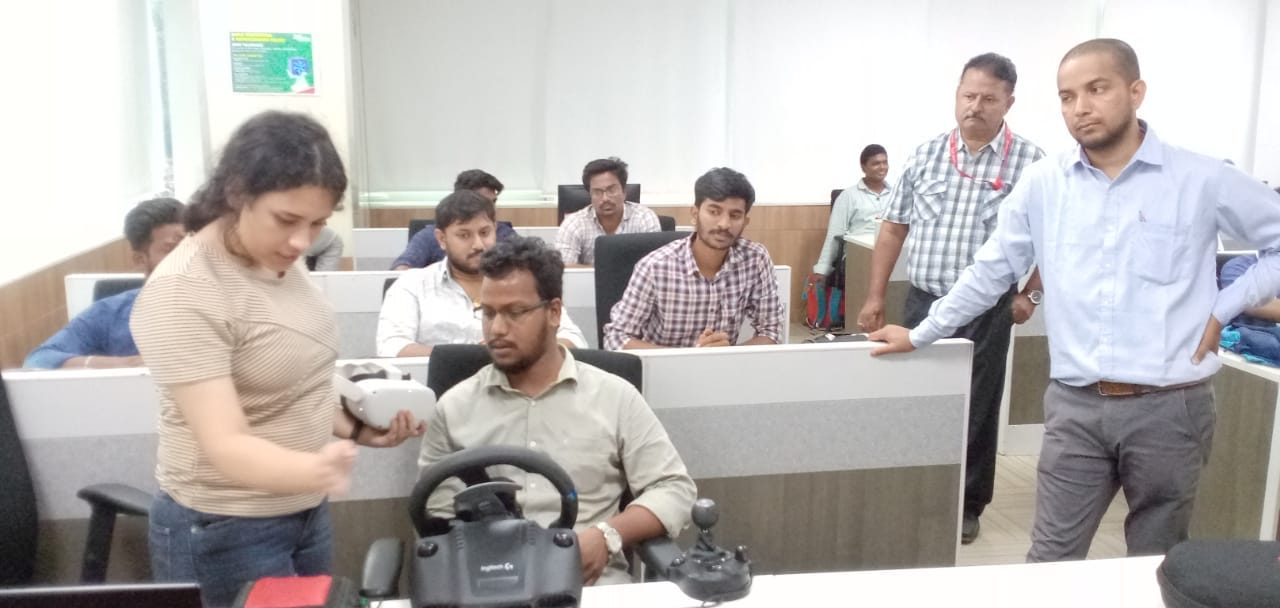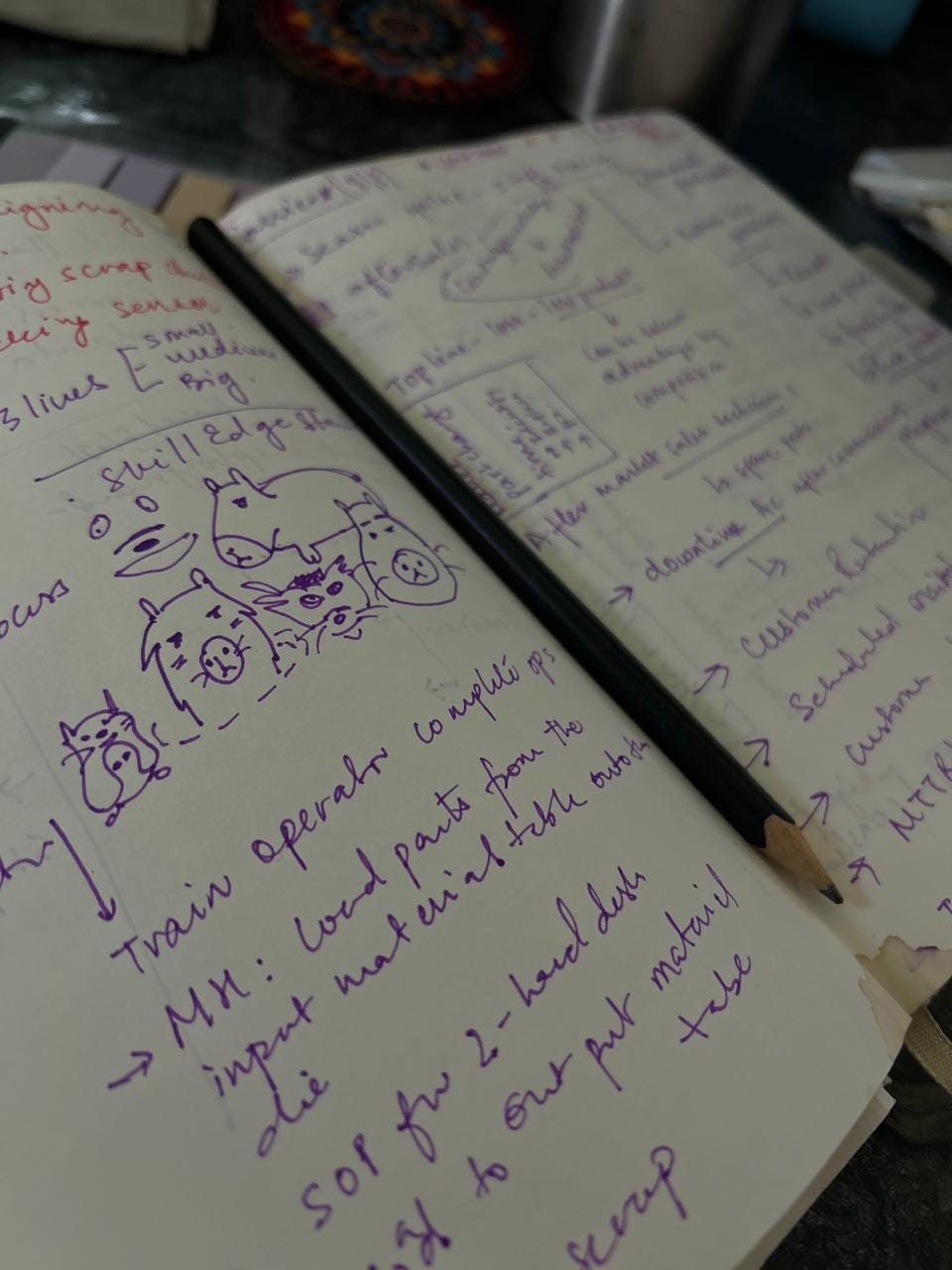The Art of Noticing: How It Changed the Way I Approach UX and Innovation
A follow-up on how I've applied lessons from The Art of Noticing to my UX journey—because you should teach what you preach.

The Art of Noticing — Rob Walker
In a world overflowing with distractions and content overload, the ability to truly notice has become a rare and valuable skill. This book isn’t just about observation — it’s about using attention as a tool for creativity, connection, and insight.
As designers and innovation professionals, we often get caught up in the corporate demands of meeting deadlines, addressing business and sales needs, and navigating workplace pressures. This leads to cognitive overload, which frequently goes unnoticed. While we focus on understanding user needs, we sometimes overlook the subtle details in our environment that could inspire better solutions.
I read Rob Walker’s The Art of Noticing two years ago, and I still find myself coming back to its lessons. At the time, I was caught up in the usual chaos — deadlines, business pressures, and the constant demand to solve problems and implement them quickly. Like many designers and innovators, I was so focused on efficiency that I didn’t realize how much I was missing.
Here are some of the lessons that stuck with me and how they changed my approach to UX and innovation.
1. Slowing Down to Truly See
One of the fundamental ideas in the book is that noticing requires us to slow down. As UX designers, we often jump to solutions without deeply understanding the problem.
Walker suggests simple exercises, such as taking a different route to work or focusing on a single color throughout the day, to break habitual ways of seeing.
I started approaching user testing and deployment process differently — rather than just confirming what I already expected, I focused on noticing everything. Tiny frustrations, subtle hesitations, the way users naturally interacted with a product without prompting.
That shift in perspective helped me design with more intention. Sometimes, the smallest detail — a slight hesitation, an unconscious workaround — held the key to a much bigger insight.
2. The Power of Paying Attention
Not everyone expresses feedback loudly. Some of the most valuable insights come from the users who hesitate to speak up.
One exercise from the book that stuck with me was Follow the Quietest Person in the Room. It’s a reminder that attention isn’t just about what’s loud or obvious. Some of the most valuable insights come from those who don’t speak up.
I started applying this to stakeholder meetings and User feedback cycle. I paid closer attention to body language, the moments of hesitation, the things people didn’t say.
In one particular project, this helped me uncover an underlying fear about adopting a new process. No one was openly resisting it, but I noticed their discomfort — how they avoided certain features, how their enthusiasm faded when the discussion moved to specific functionalities.
That realization led us to redesign key aspects of the product, making it more intuitive and less intimidating. If I hadn’t been paying attention to those subtle cues, we would have completely missed the real issue.

product demonstration at a manufacturing plant in Vizag.
3. Deepening Our Connections
Working with a company specialising in immersive reality training simulations, I have often encounter a key challenge: introducing new technology to the blue-collar workforce isn’t just about innovation — it’s about trust. Our audience isn’t always tech-savvy, and their hesitation isn’t simply resistance to change. It’s fear of the unknown, the pressure of compliance, and sometimes, a quiet reluctance they don’t even voice. Some push back openly, while others go along because they have to.
But I’ve learned that forced adoption never works in the long run. If people don’t want to engage, they never fully embrace the solution.
At first, I approached this challenge like any other — explaining benefits, demonstrating efficiency, making a logical case for why this technology mattered. But something wasn’t clicking.
It wasn’t until I started noticing — really noticing — that things changed. Instead of focusing on what users said, I paid attention to what they didn’t say. The nervous jokes before putting on a VR headset. The hesitation in their hands before starting a simulation. The way some people lingered at the back of the room, quietly observing rather than participating.
These weren’t just small reactions; they were signs of deeper discomfort. I realized that adoption wasn’t about convincing — it was about understanding.
Instead of pushing adoption, I let them explore at their own pace, focusing on small wins first. I learned that adoption isn’t about convincing — it’s about understanding and building trust. And true understanding starts with noticing I let people explore at their own pace. I introduced small wins first, helping them build confidence. The result? A much smoother, more natural adoption process.

Product Deployment in Indonesia, Jakarta
As Walker states, “Attention is the most basic form of love,” and giving attention to small details can make all the difference in user satisfaction.
4. Journaling and Documentation
One of the simplest yet most impactful practices I took away from The Art of Noticing was the habit of documenting what I observe.
Before, I never really kept track of those fleeting insights — the small patterns, recurring frustrations, or moments of inspiration. Now, I make it a point to jot things down. Whether it’s user research, design ideas, or just a random observation, this habit has helped me build a personal archive of insights that often come in handy later.
It’s a reminder that noticing isn’t just about the present — it’s about creating a deeper well of understanding to draw from in the future.
Pro tip: If you tend to forget things like I do, a small journal with fun doodles can be a lifesaver!

What This Book Taught Me About Design and Innovation
Looking back, The Art of Noticing changed the way I approach my work. It made me realize that:
Noticing is an active skill — one that can be trained and refined.
True understanding comes from paying attention to what’s unsaid as much as what’s spoken.
Small details often hold the biggest insights.
Innovation isn’t just about new ideas; it’s about deeply understanding the world around us.
Walker says, “The more you notice, the more interesting your world becomes.” And in design, the more we notice, the better our solutions become.
Join Aishwarya on Peerlist!
Join amazing folks like Aishwarya and thousands of other people in tech.
Create ProfileJoin with Aishwarya’s personal invite link.
2
18
0